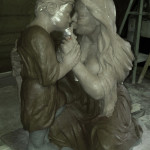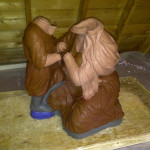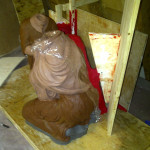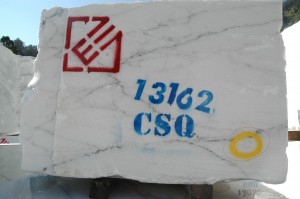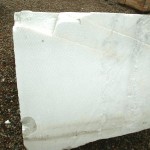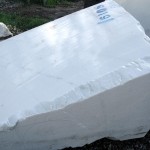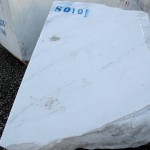Some time ago, in my post “preparing your plaster mold”, I outlined the step by step process of planning the construction of a plaster mold. Each section must pull away smoothly without any undercuts. With my new Pieta Amare, this will prove very challenging as both Mother and Son are facing each other with their hands clasped together and sandwiched between them. For this project, I will need to work separately on the body, face and hands. Then reassemble the pair after the clay has been cast.
Tag Archives: religious statues
The Importance of the Maquette
Choosing your marble is reminiscent of school yard play…. Finding that precious stone… playing Indiana Jones… But now that you have dusted yourself off and have the block placed in your studio. Its time to get busy.
Designing your masterpiece through pencil and clay sketches is where the true work begins. The ability to discipline yourself to the task of creating a Maquette separates the Master from the Novice. Long before you can apply your muscles to the hammer and chisel, you will need to lovingly caress and model clay.
I know that for many, there will be the temptation to jump right in and start swinging at stone… and for the contemporary artist this may be the best way to coax shapes and curves from the natural grain that the stone presents.
However, if you are interested in realism… in the Renaissance tradition, mastering the maquette is necessary, and if done well, can be financially rewarding.
Michelangelo always made models. In fact, for each scale maquette of a future marble statue, he would additionally create two smaller sketch models (bozzetto). The first as a charcoal sketch, the second in wax or terrasecca (unfired clay)
So important was the modelling process to Michelangelo that he often and publicly lamented on how artist of his generation failed to develop the ability to sketch their work in advance. Continue reading
Transportation
Michelangelo nearly lost his life moving marble from the Carrara mountains to Rome, and hundreds of labourers he employed risked their lives daily. Rope would snap, stone would fall and men would die. The whole process from selection, to excavation to transportation could take a year or more, and cost ten times more than the marble itself.
Mapping out the fault line
Pope Julius the II had authorized Michelangelo to choose the finest stone, and the Master was keen to spend months hand selecting the cuts and pockets to be quarried. Despite having the financial ability to acquire the best marble that the Carrara mountains could produce, imperfections and flaws threatened to surface once his chisel was hammered deep.
Look for quality
Marble counter tops look better when the stone has a ‘marbled’ colour… that is, swirls of varying tones and shades…. This will enhance the appearance in your kitchen…
A stone without faults is best, but if they are present (and most affordable stone will have at least one) mapping out the fault line, and then working around them is critical if you don’t want your hard work shearing off in unexpected directions. This has happened to us all and nothing feels worse…. I would rather pummel my thumb then crack my statue along a fault….
- Examine your marble from all sides
- Marble Should not be left directly on the ground
- Salts can be absorbed from the road

